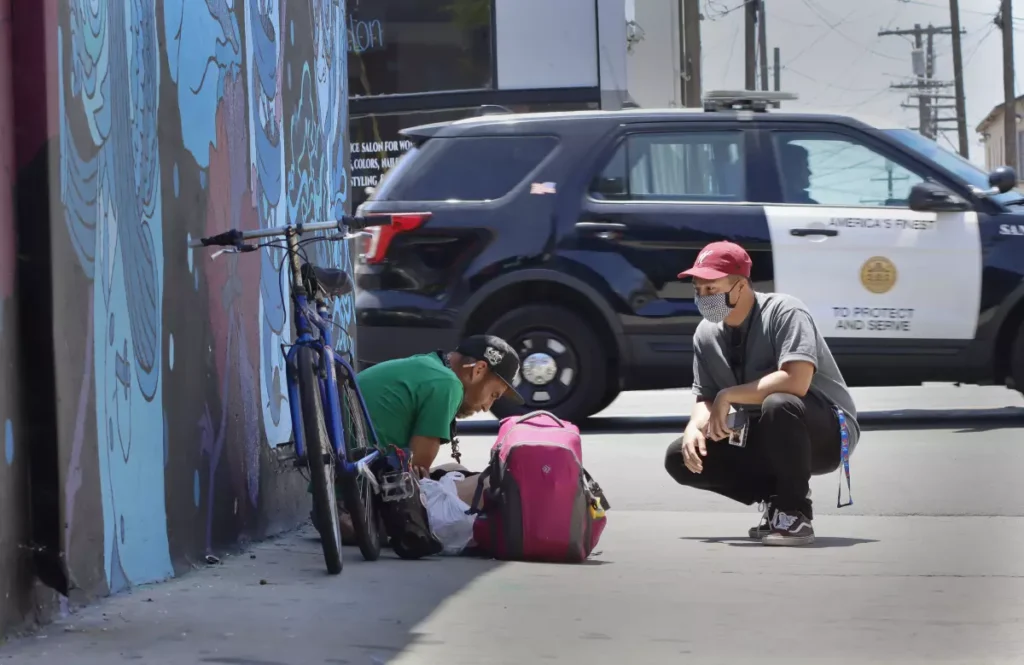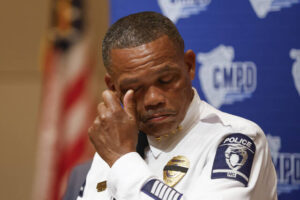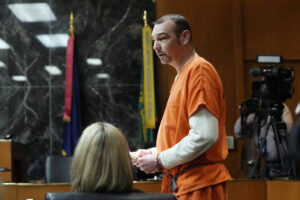Park is a mental health advocate and author of the memoir/self-help book “Bliss + Blues = Bipolar: A Memoir of my Ups and Downs Living with Bipolar Disorder.” He lives in Los Angeles.
California has spent a stunning $17.5 billion trying to combat homelessness over just four years. But, in the same time frame, from 2018 to 2022, the state’s homeless population grew. There are at least 7,600 people experiencing homelessness every night in San Diego.
If society summoned all the will in its power to improve dual diagnosis — i.e., mental illness and drug addiction — it would also improve conditions in jails and on the streets. Left unchecked, dual diagnosis leads to the homeless roaming the streets and committing crimes to survive.
When I was first diagnosed with bipolar disorder, I thought, “Just talk therapy and pop pills, right?” But therapy made me uneasy, and I did not want to take pills. I also began chasing after the next drugged high: alcohol, marijuana, ecstasy, cocaine and crystal methamphetamine.
This is the problem of dual diagnosis (or co-occurring disorder). It begins with mental illness, making life a nuisance. It becomes a monumental task to shower regularly, put on clean clothes, do the laundry and buy groceries. Not to mention holding down a job and pursuing a career.
But then add addiction, and your life becomes hell on Earth.
You cannot pay the rent or the mortgage. Then you sleep in your car, live out of a motel room or crash on a friend’s couch. By then you are out on the streets. Meanwhile, your finances cannot support your expensive drug habits, and you end up burning a hole through your wallet or purse.
So why do it if it is so self-destructive? Simple: self-medication. Why bother with the tedium of therapy that wastes time and the popping of pills that do nothing when all your troubles can conveniently disappear right up your nose with one single snort of a white line?
Once homeless, the dually diagnosed get picked up for crimes that support their drugged street life. Meanwhile, the criminals who do belong in jail are crowded out onto the streets. Soon they are hauled back into jail while the formerly homeless are thrown back out again onto skid row.
The National Institute on Drug Abuse states that of the 42.1 million adults with mental illness, 7.7 million had substance use disorders. But only 12.4 percent of adults received treatment for both. 50 percent of the incarcerated are dual diagnosed, but fewer than 10 percent receive treatment.
What worked for me was a locked facility in late 2013. Like triage, it established a crash course of meds and therapy, alongside no drugs nor crime, all where you cannot leave without the permission of the attending psychiatrist. It sure beats languishing in jail or roaming the streets.
After stabilizing in early 2014, I moved into transitional housing, where I maintained my sobriety and mental health. It was a sober living residence called Angel Villa in Encino. I liked living at a place that willingly opened its doors to those who would otherwise have few housing options.
In June 2014, a new government-funded apartment dwelling opened in Van Nuys. Homes for Life Sequoia was a brand-new building with units for the mentally ill and chronically homeless. This was the permanent supportive housing I needed: rent control, furnished apartments, custodial staff, on-site manager.
I have been sober for 16 years. I am mentally healthy. But my family also supported me, and society gave me a second chance. Many dual diagnosed patients do not enjoy these advantages, so success overcoming mental illness and drug addiction is difficult. But still possible.
According to a YouGov poll, 66 percent and 60 percent — ranked first and second — of Americans were most likely to say drug and alcohol addiction and mental illness were major causes of homelessness. So let us push for dual diagnosis treatments, to achieve an integrated approach to tackling the problem.
Americans were asked what policy proposals they would support to end homelessness. In second place, 78 percent support counseling programs for mental illness, while in fourth place 74 percent supported funding rehabilitation programs with addiction. Dual diagnosis treatments could knock out both.
And according to the same poll, the proposal that Americans were most opposed to was arresting people who are homeless (65 percent).
Imagine the social benefits of less dual diagnosis: less homelessness in the streets and less overcrowding in jails. But we can start with the individual success stories of the dual diagnosed repaying their debt to society and becoming emotional bedrock for their families.








